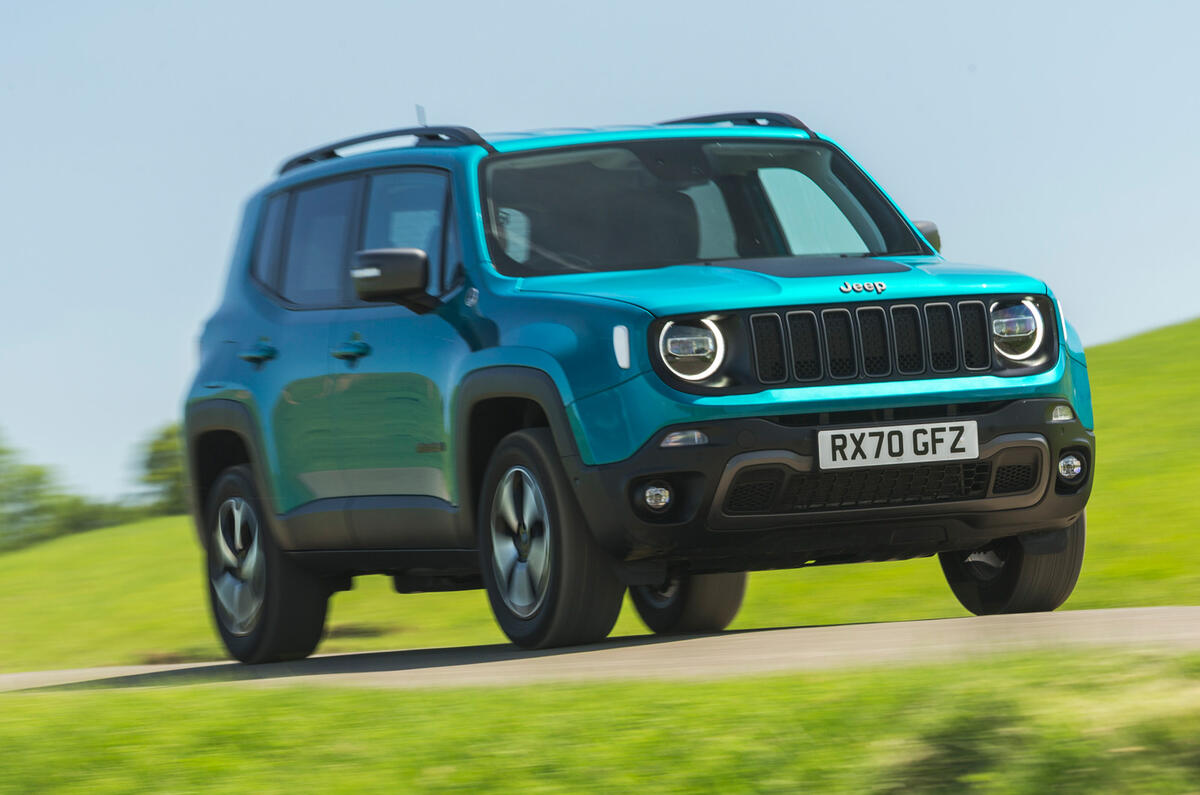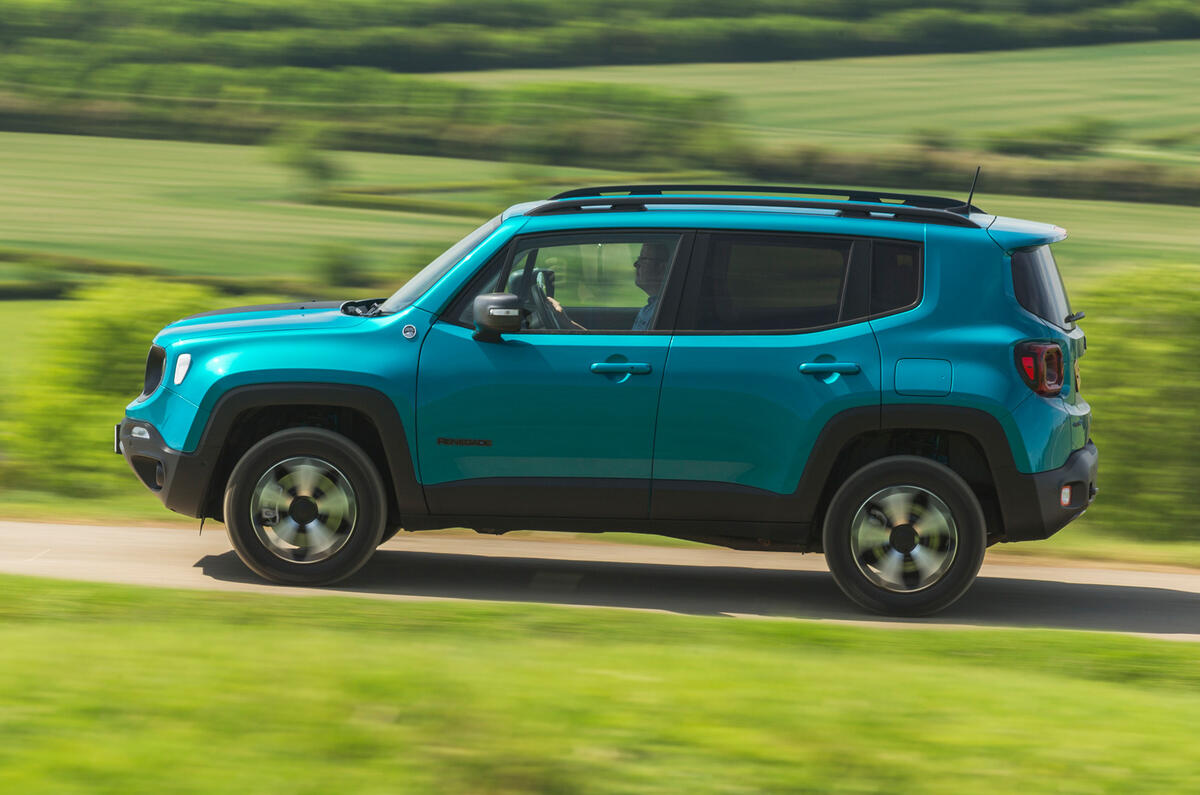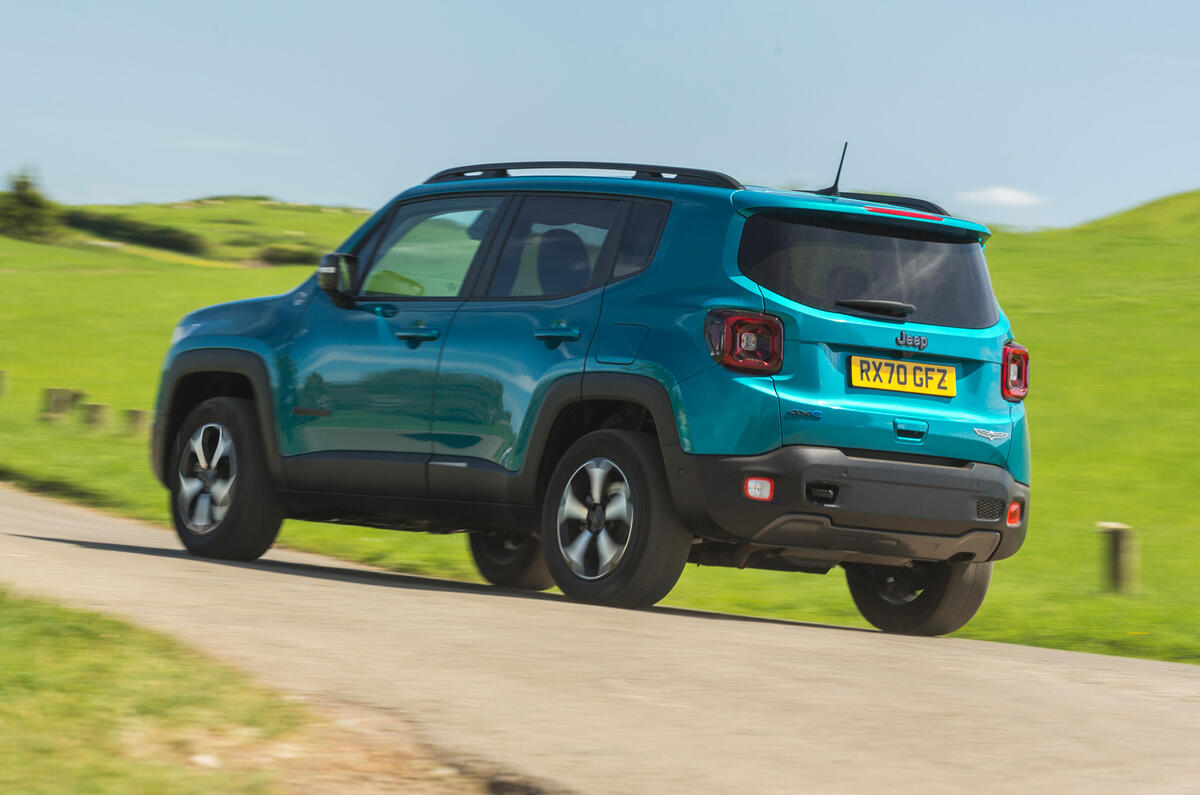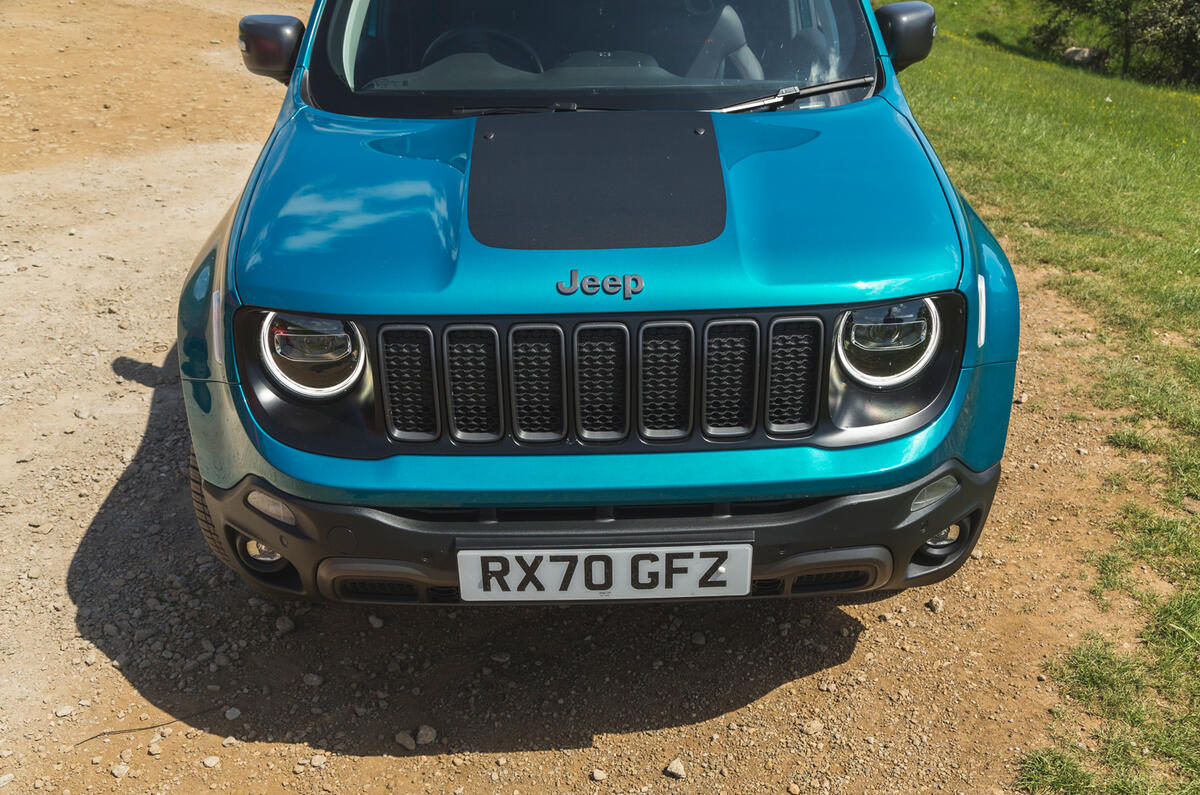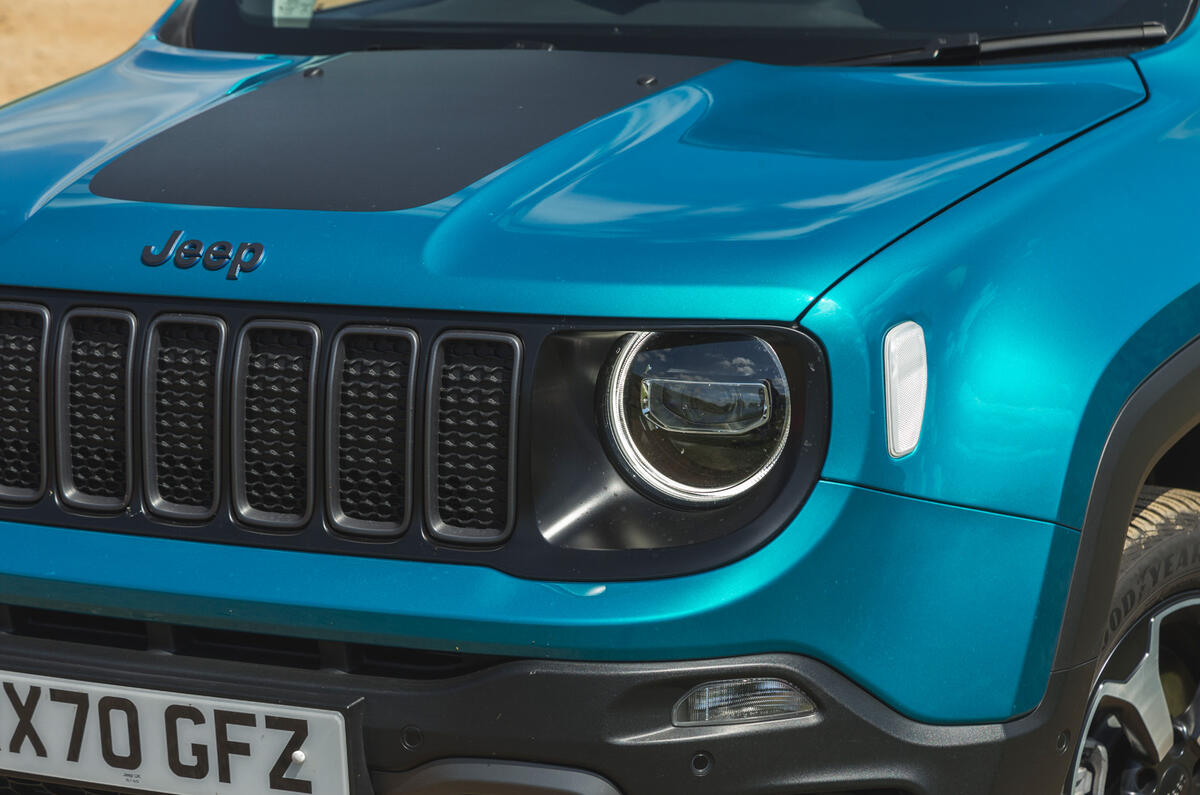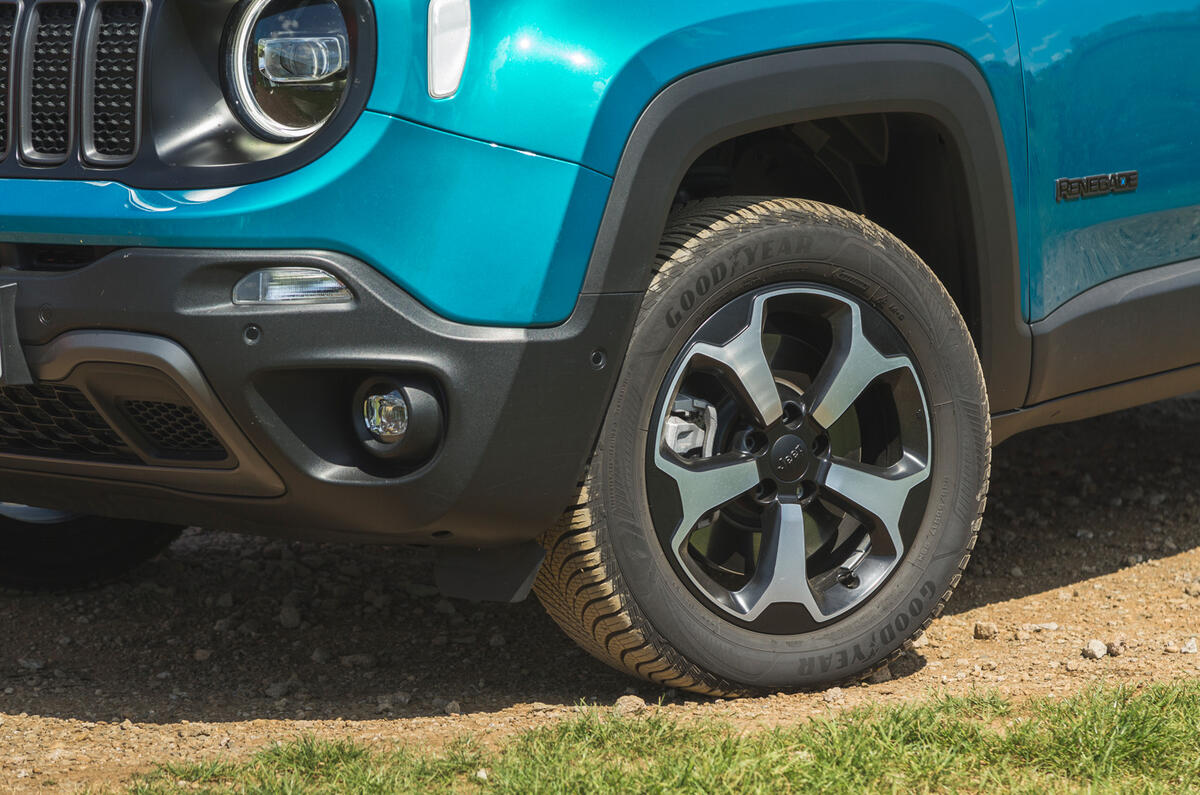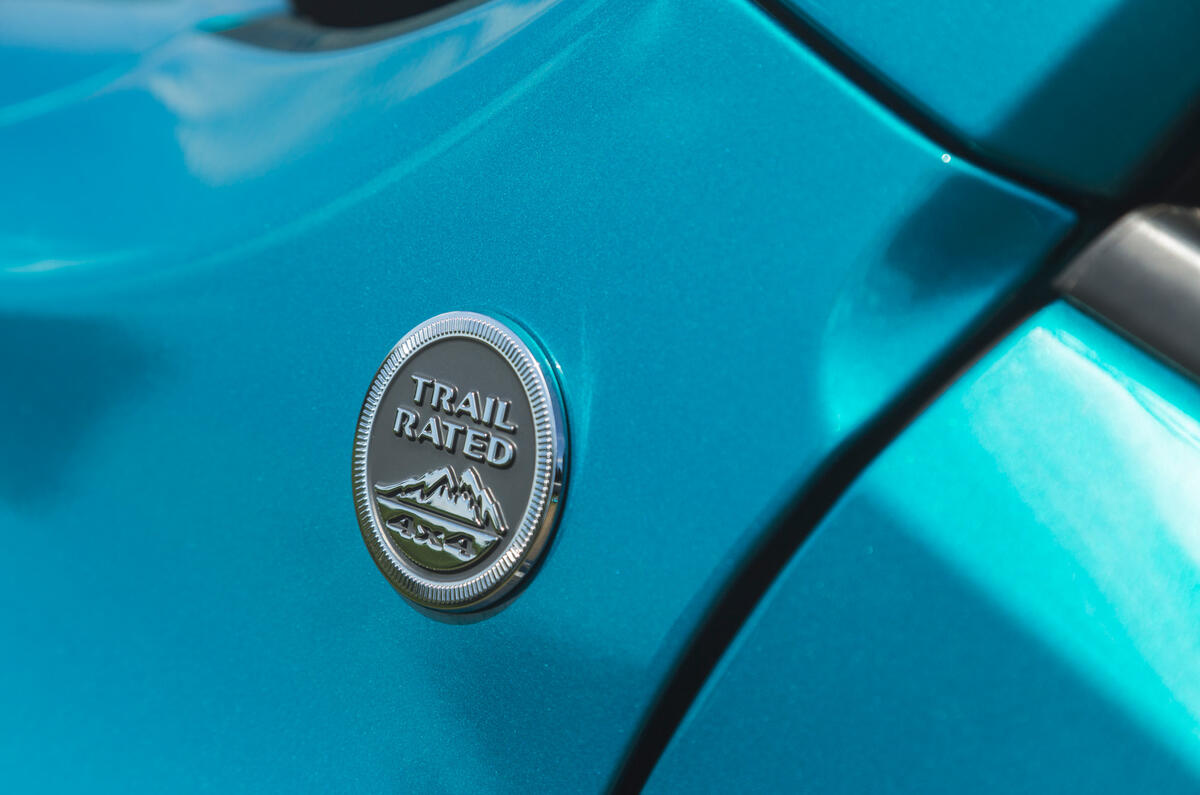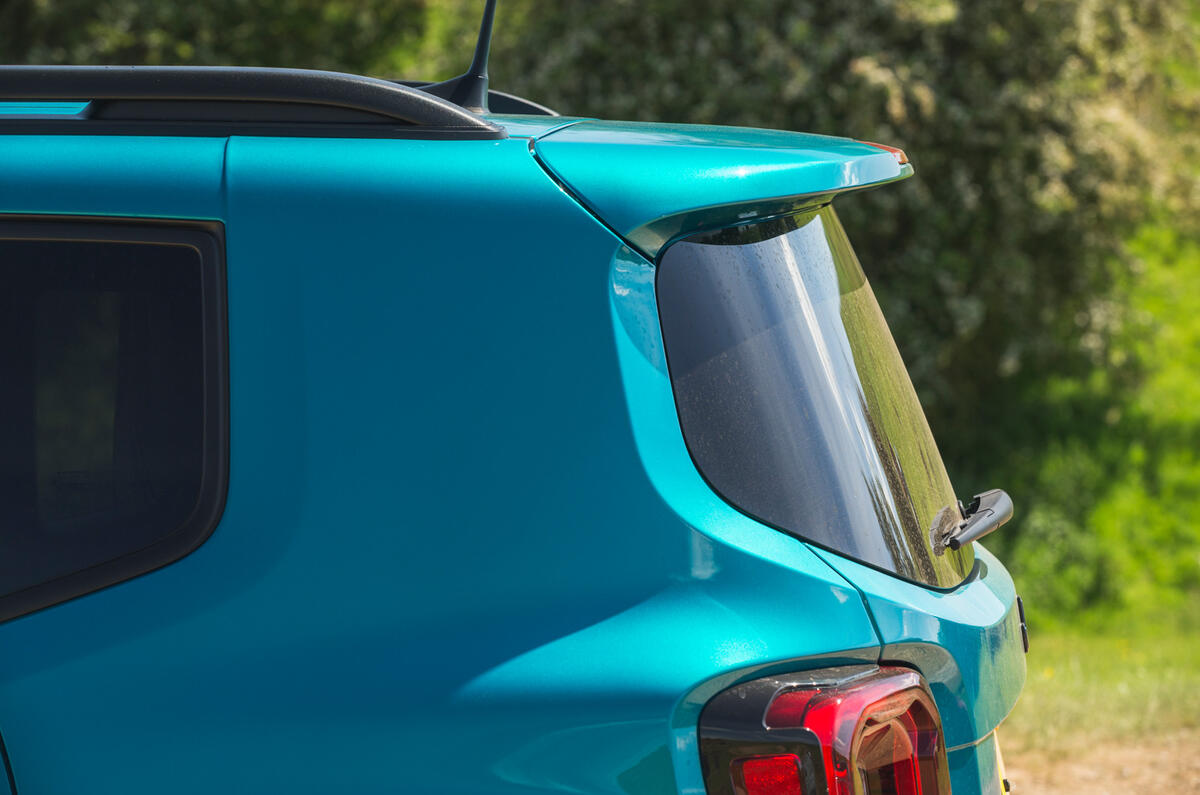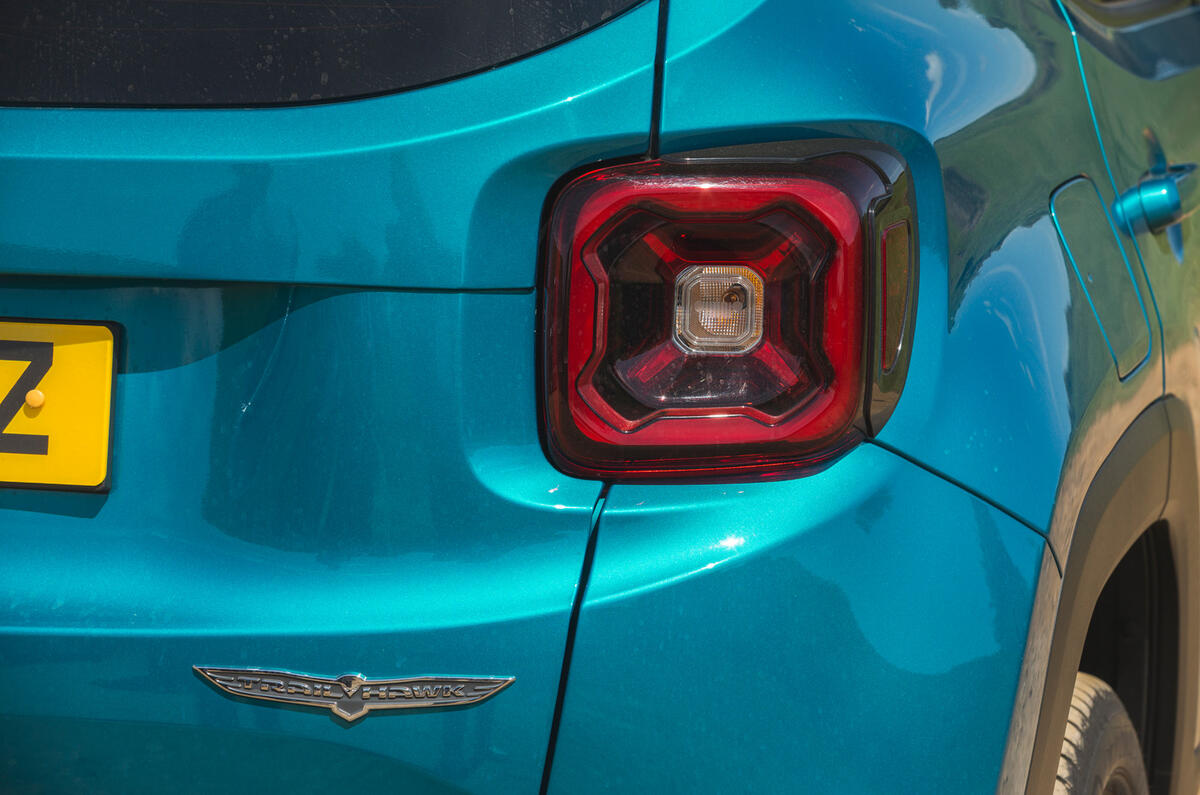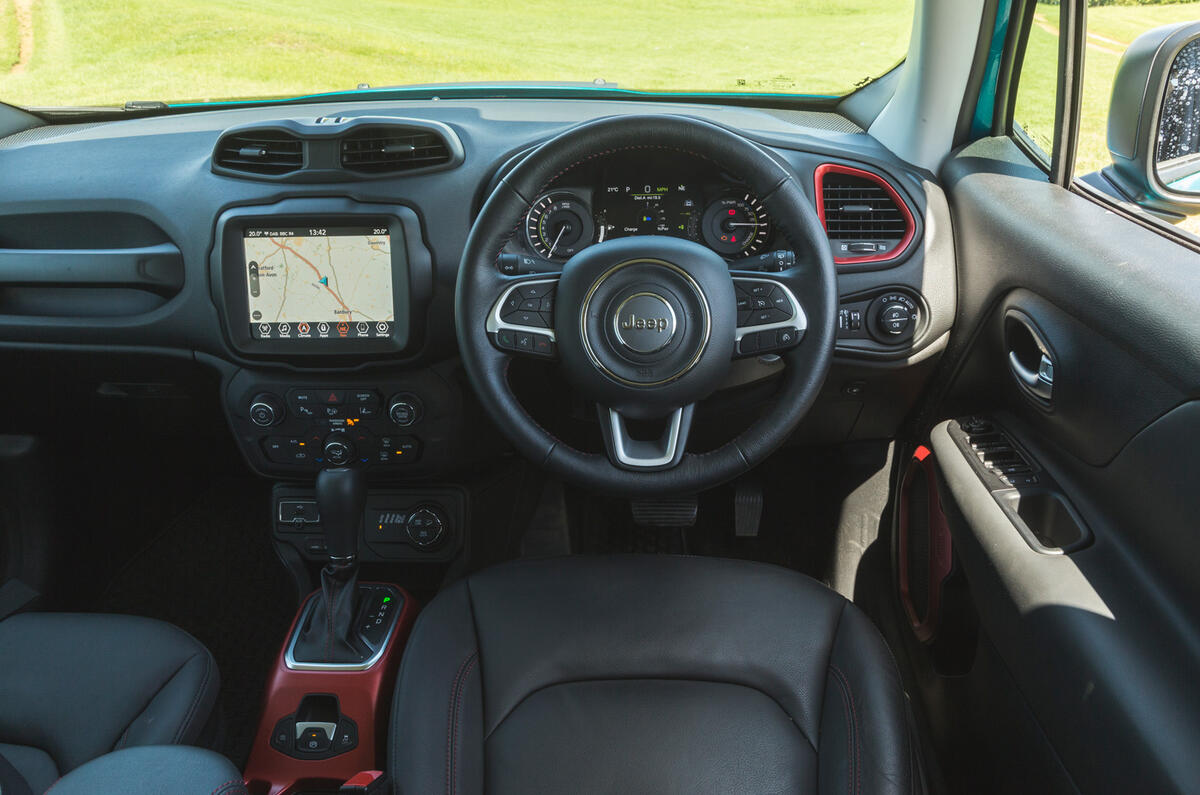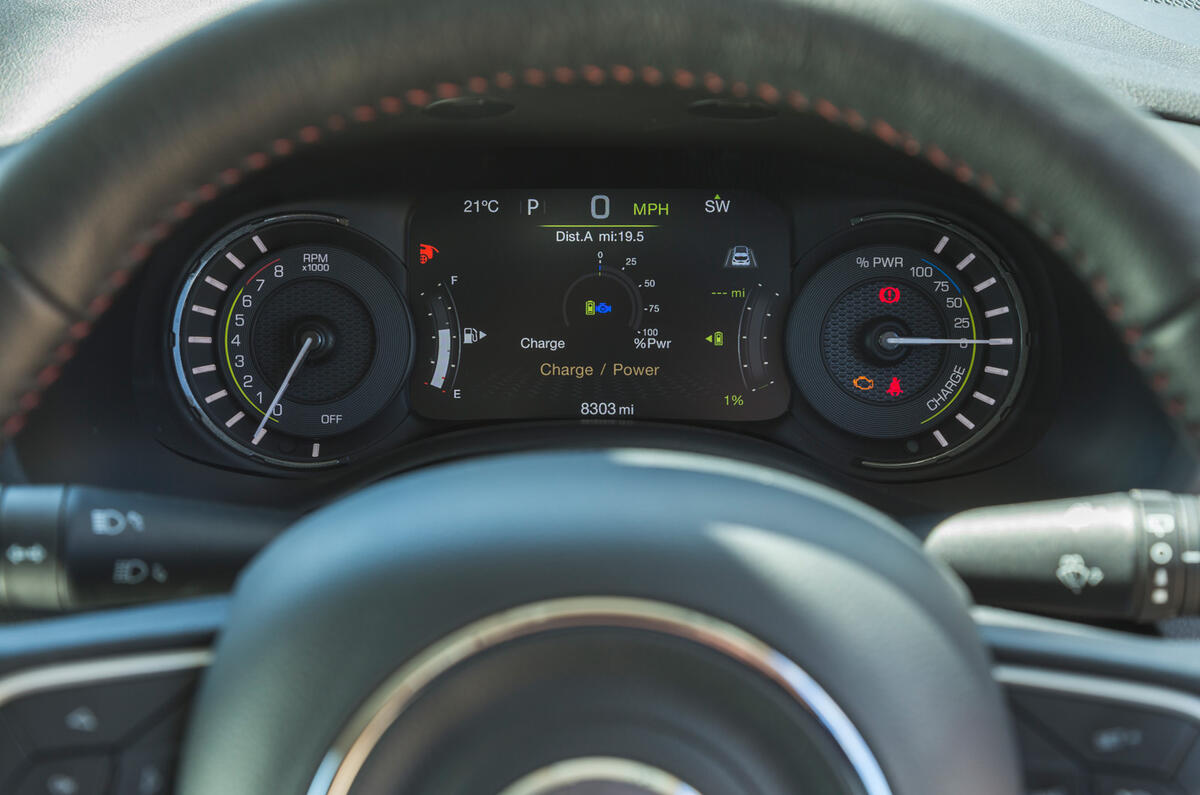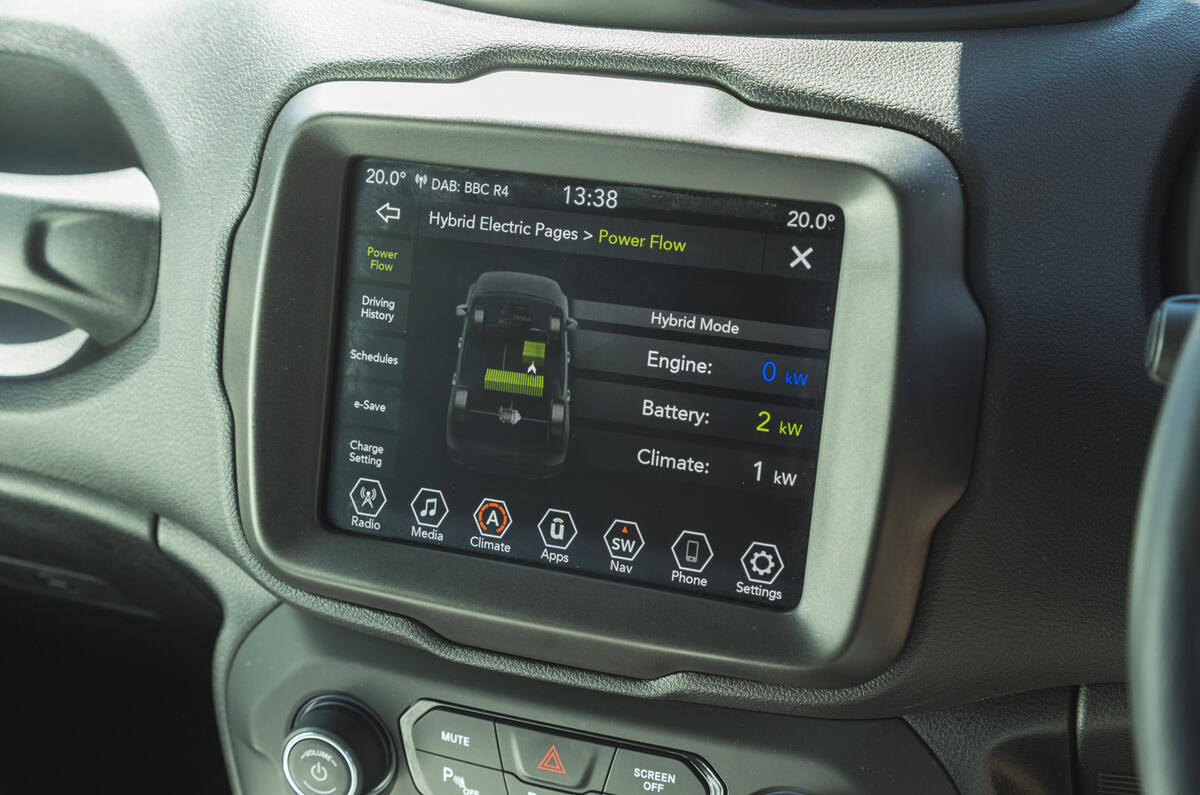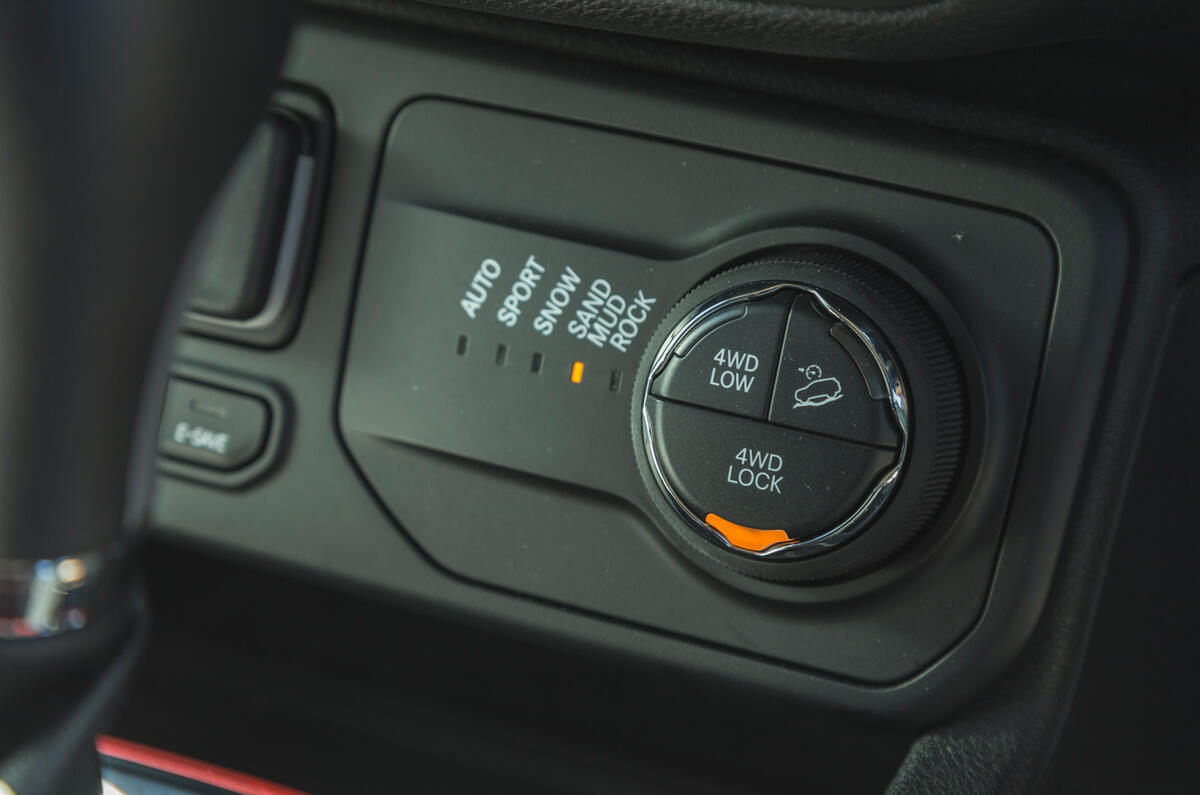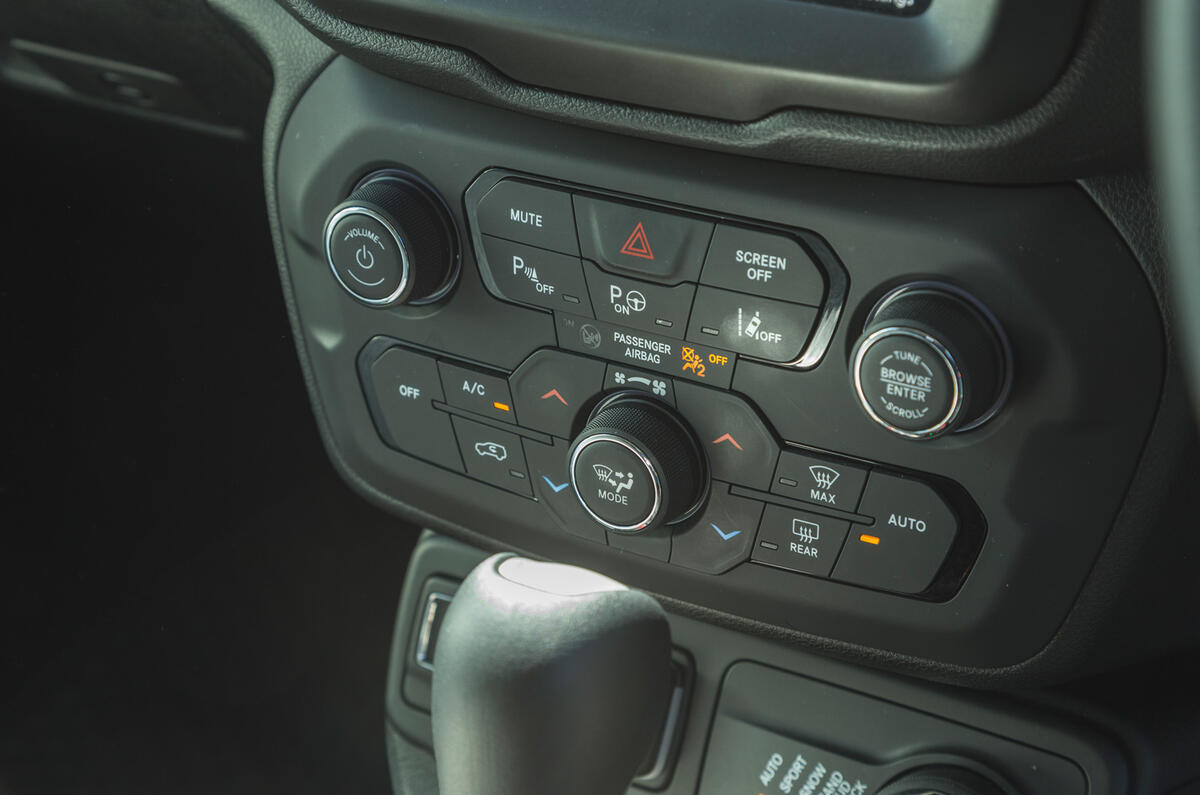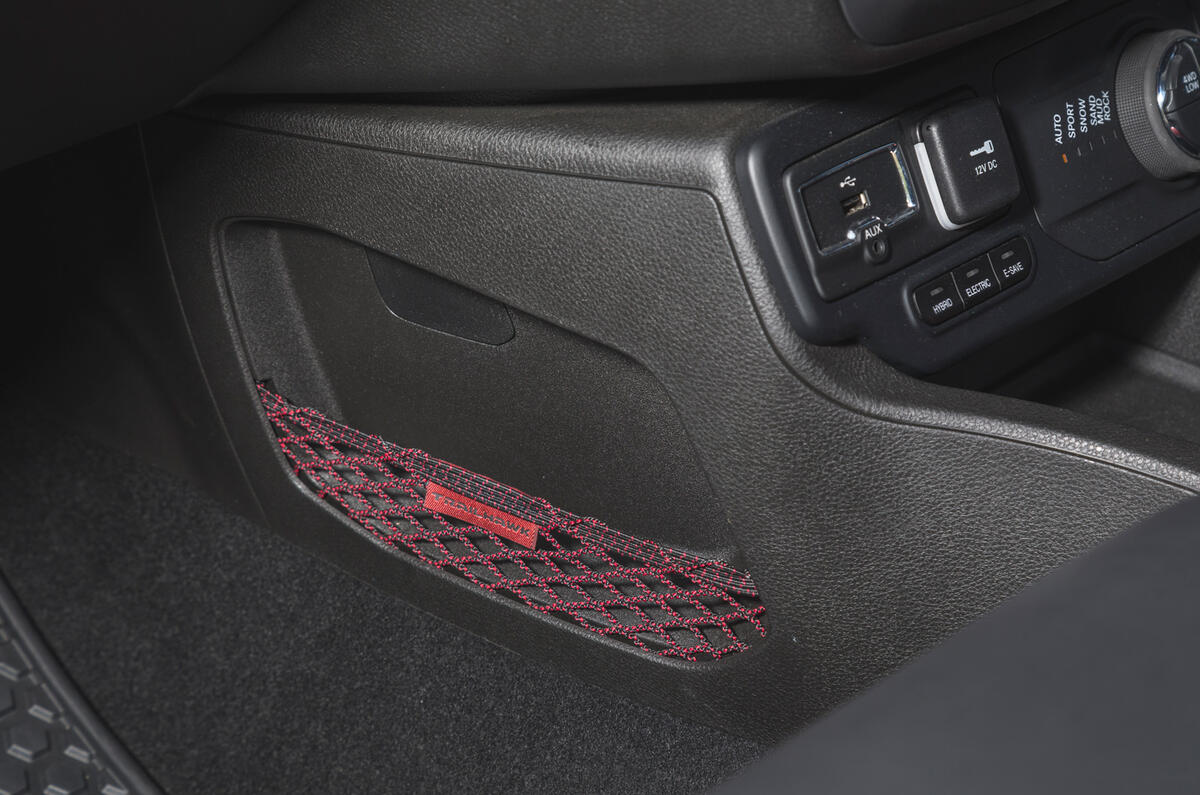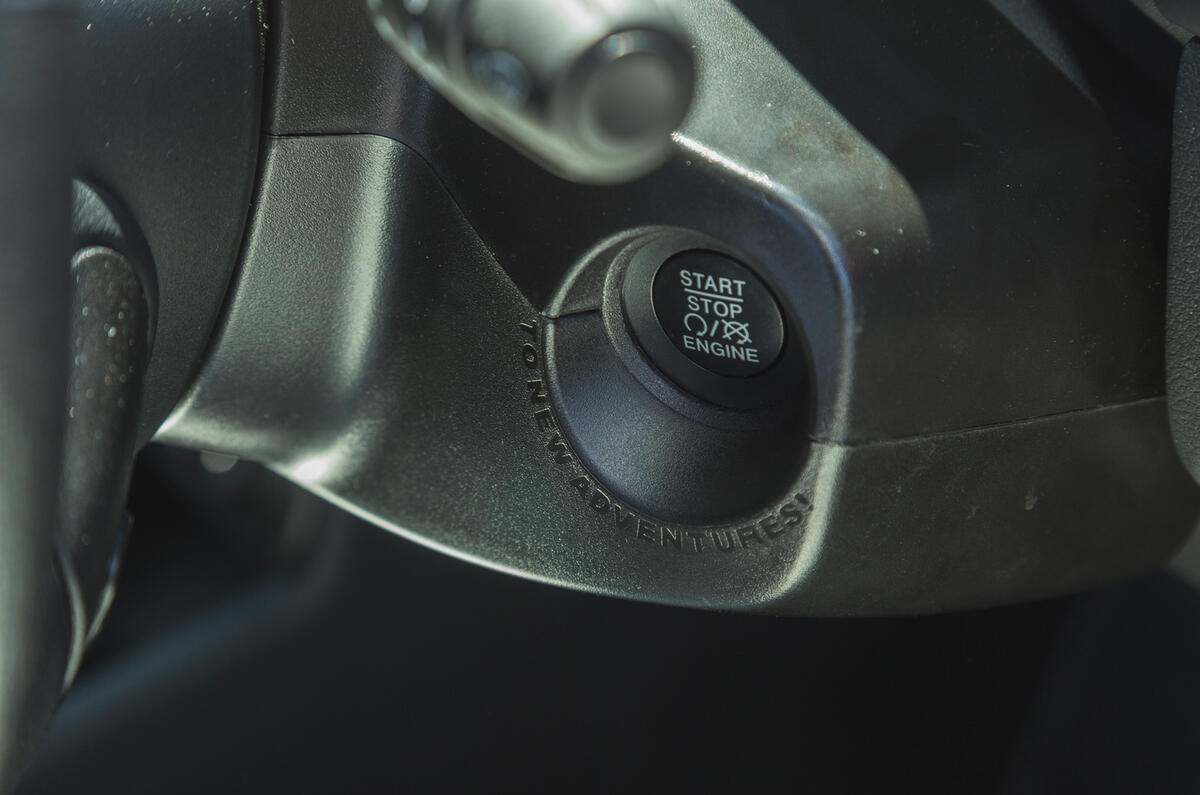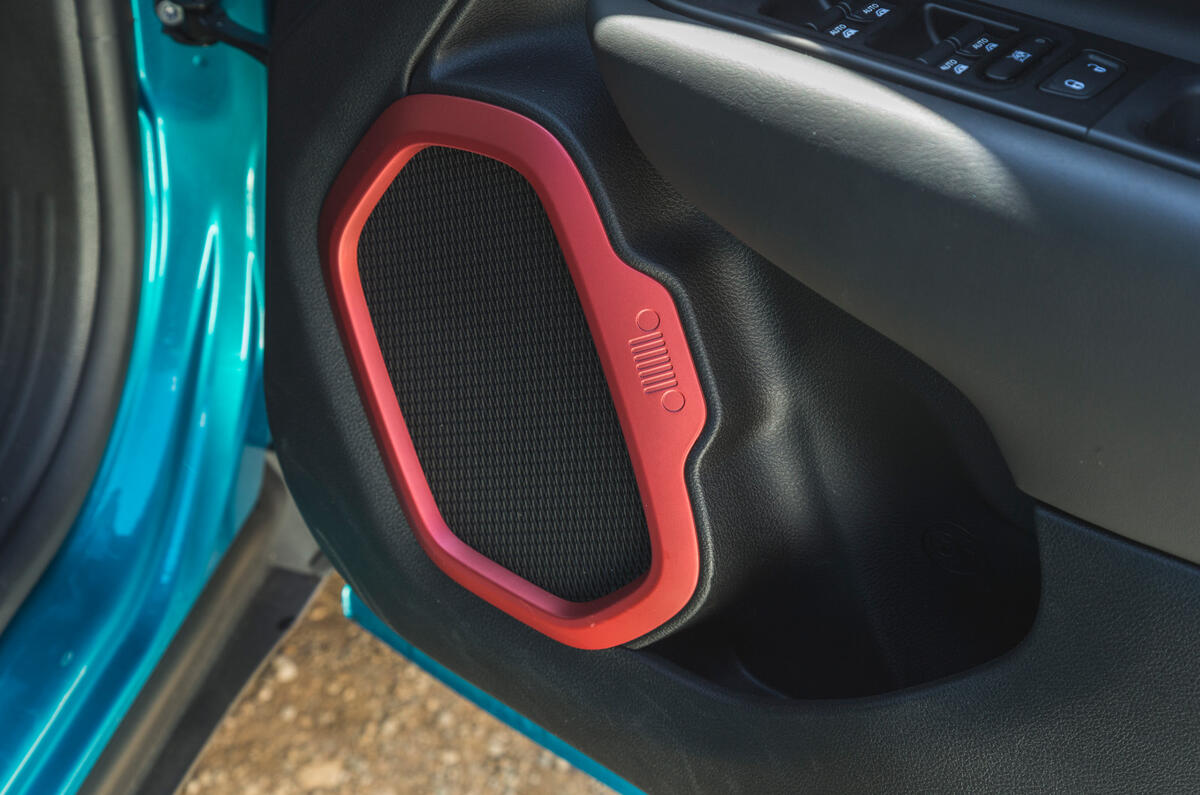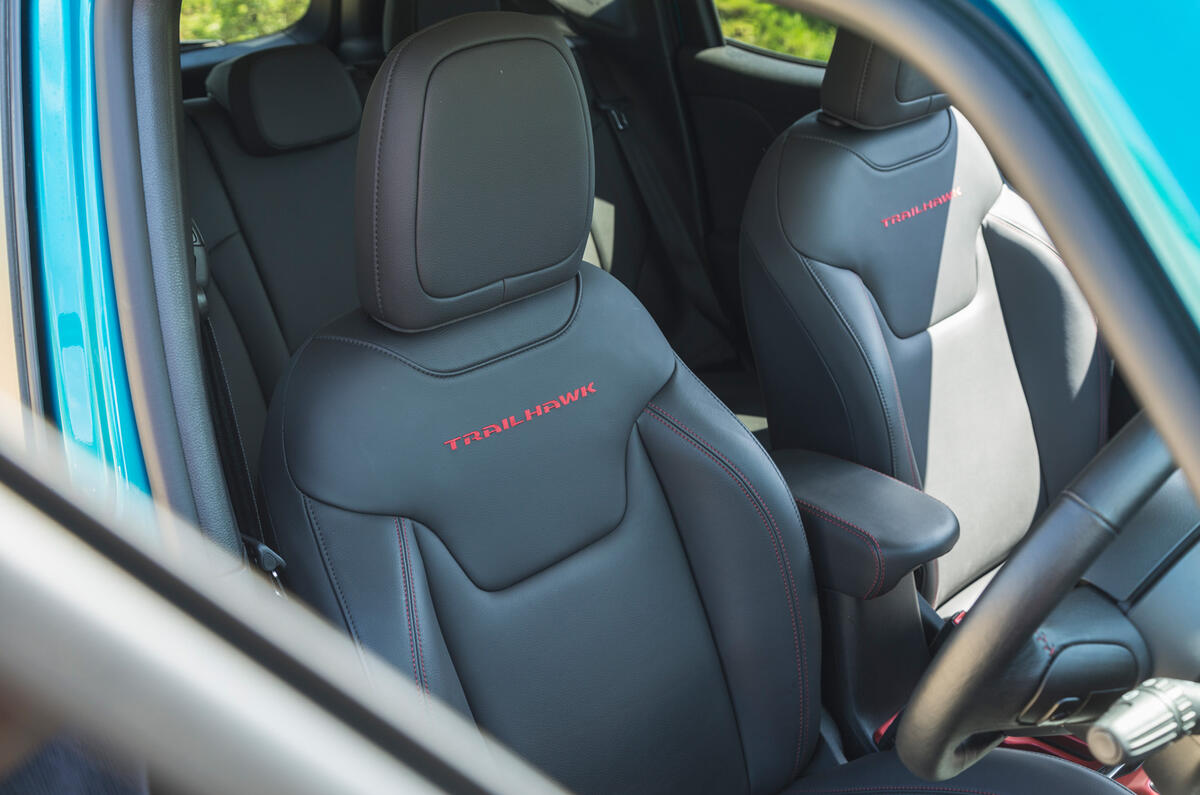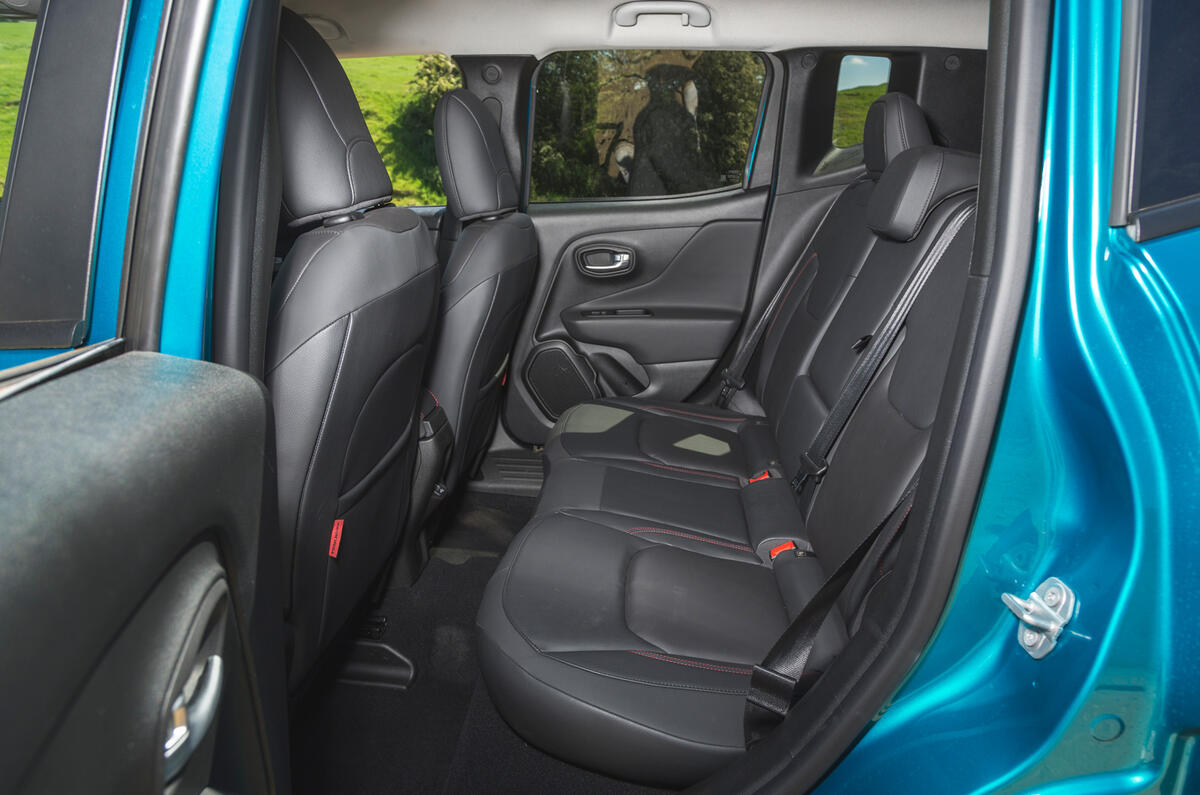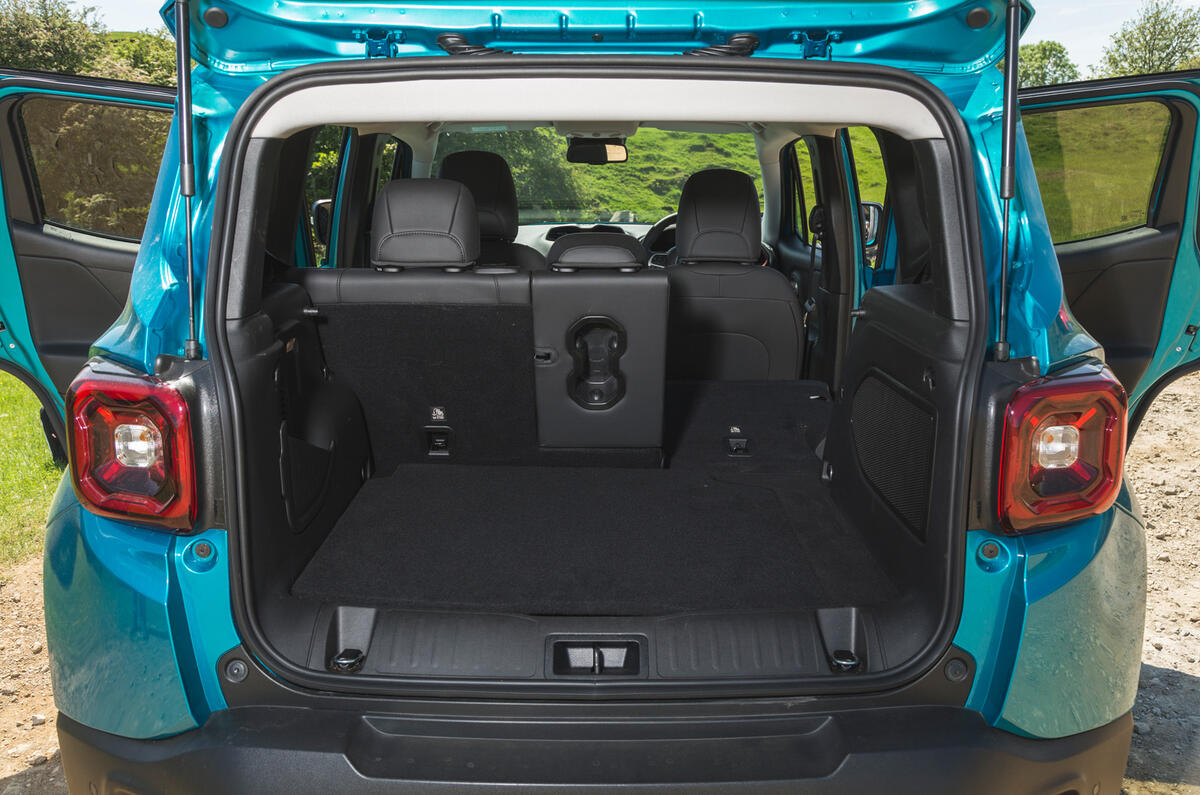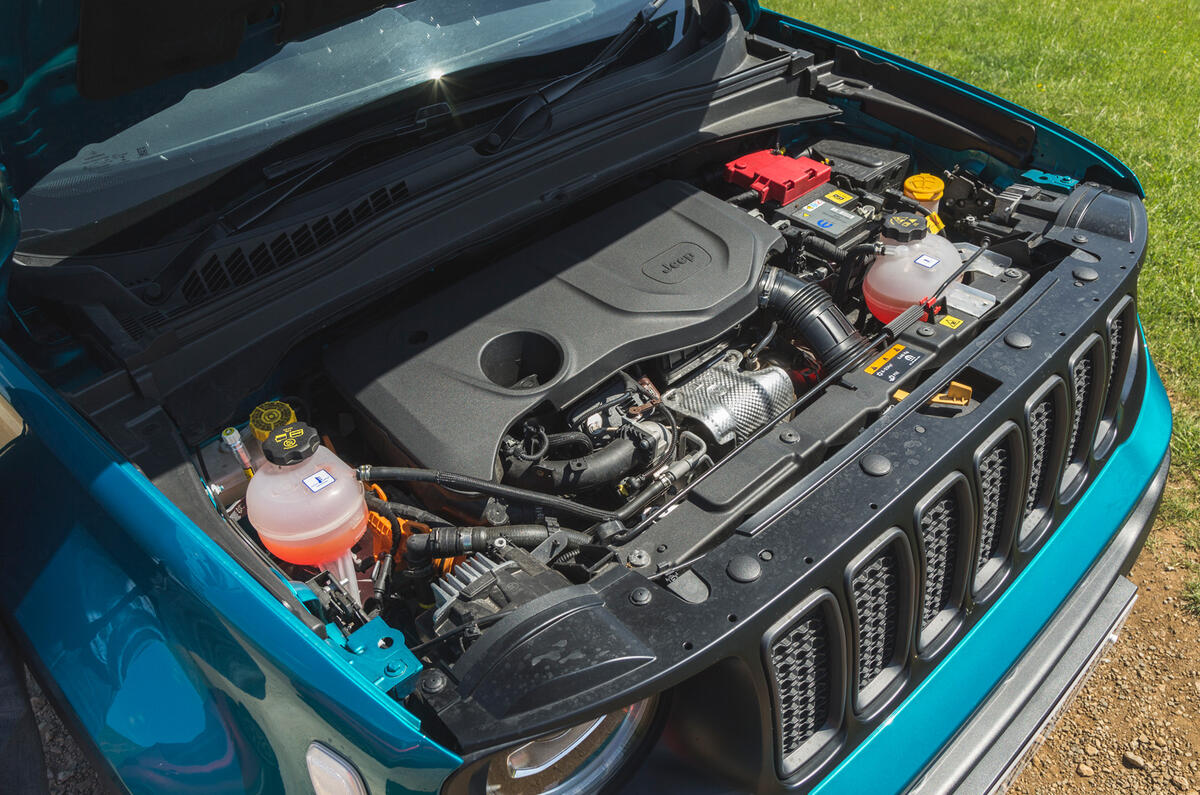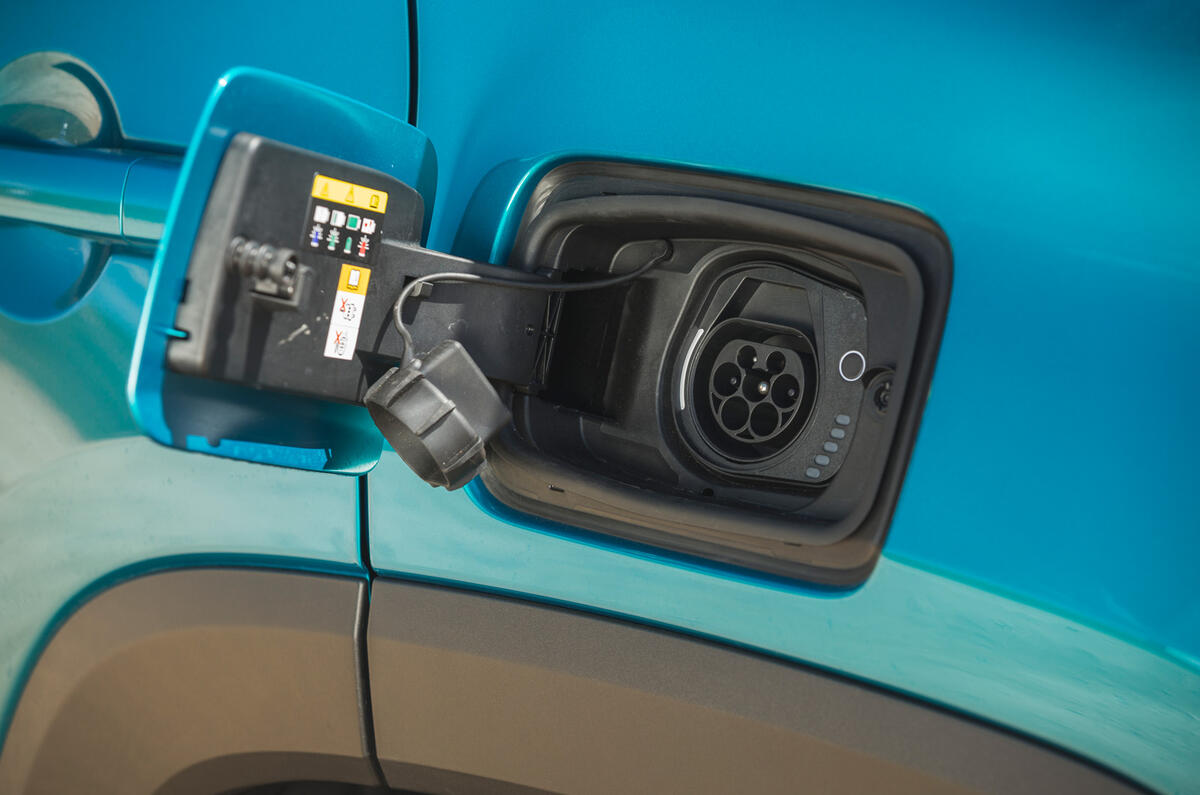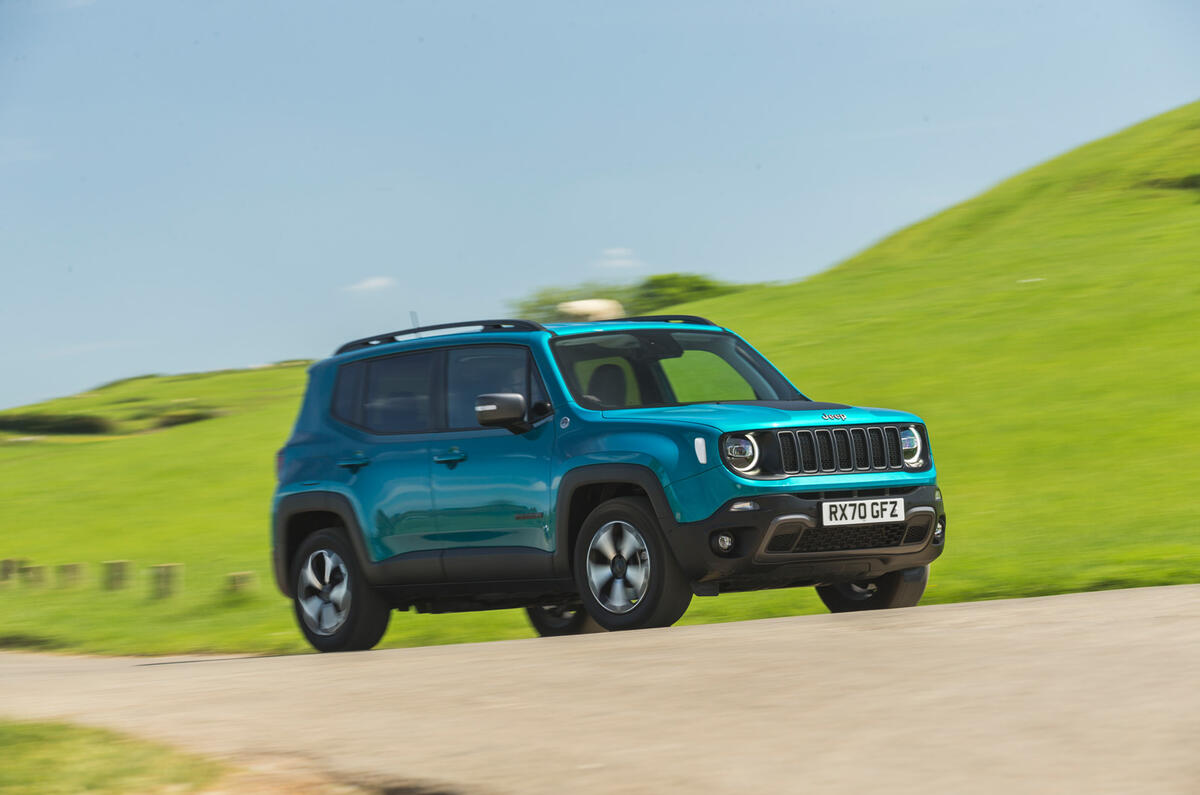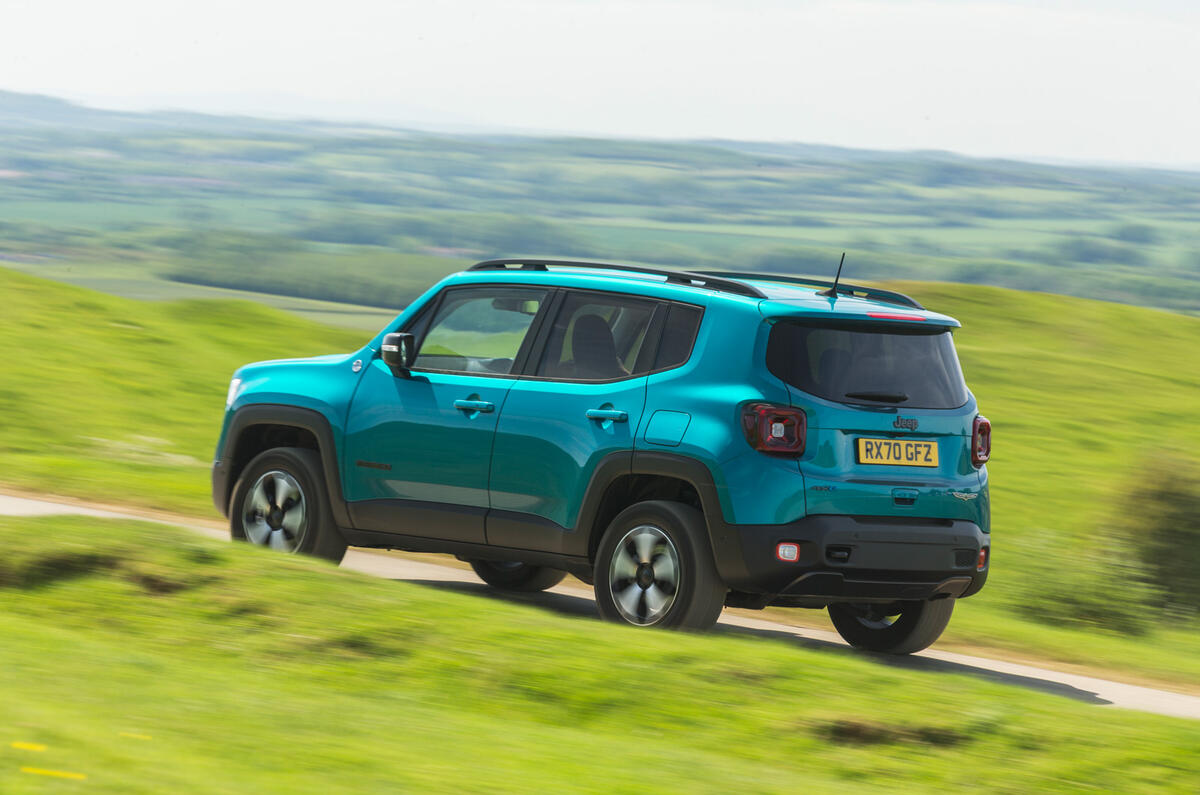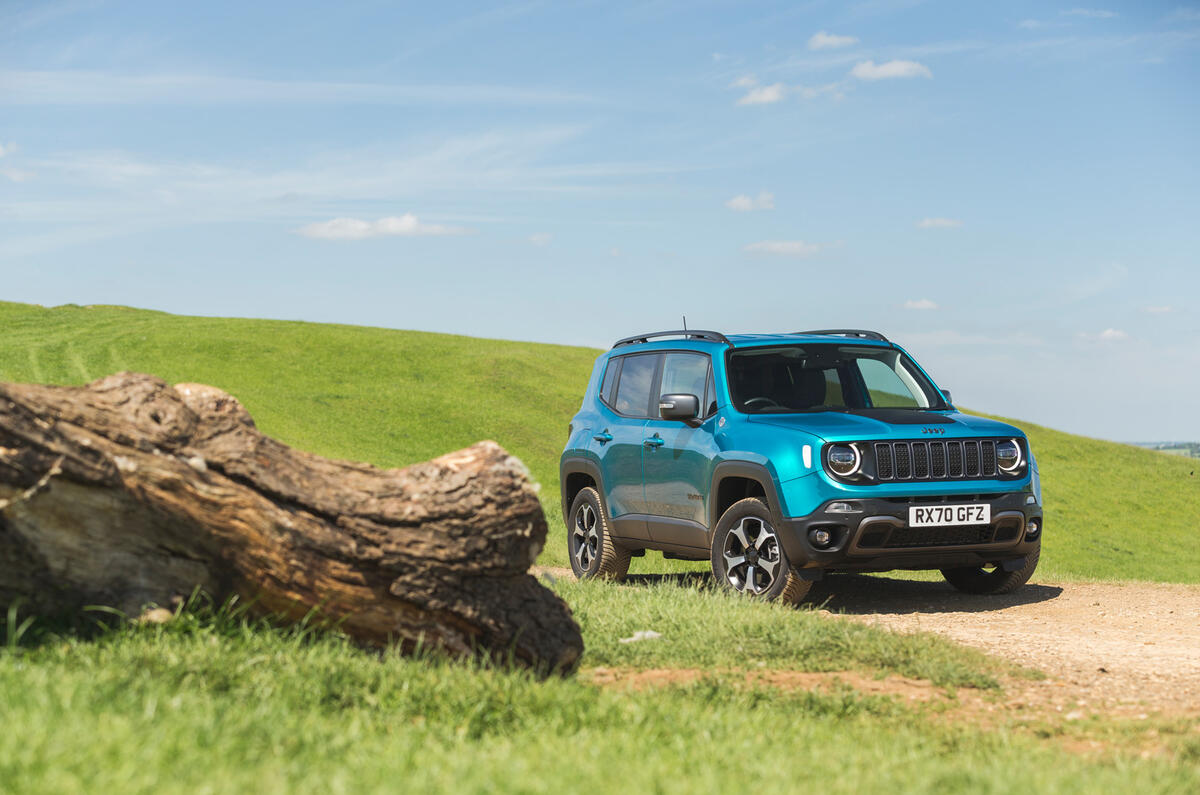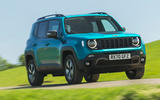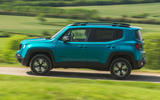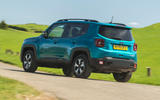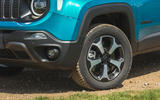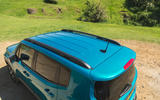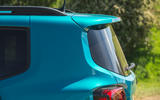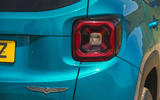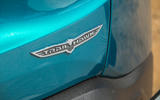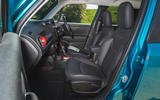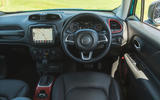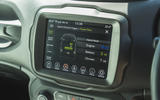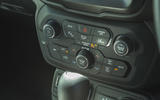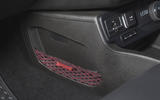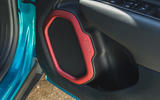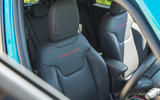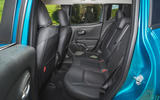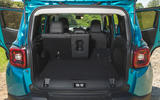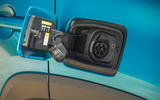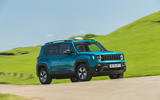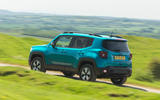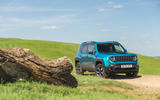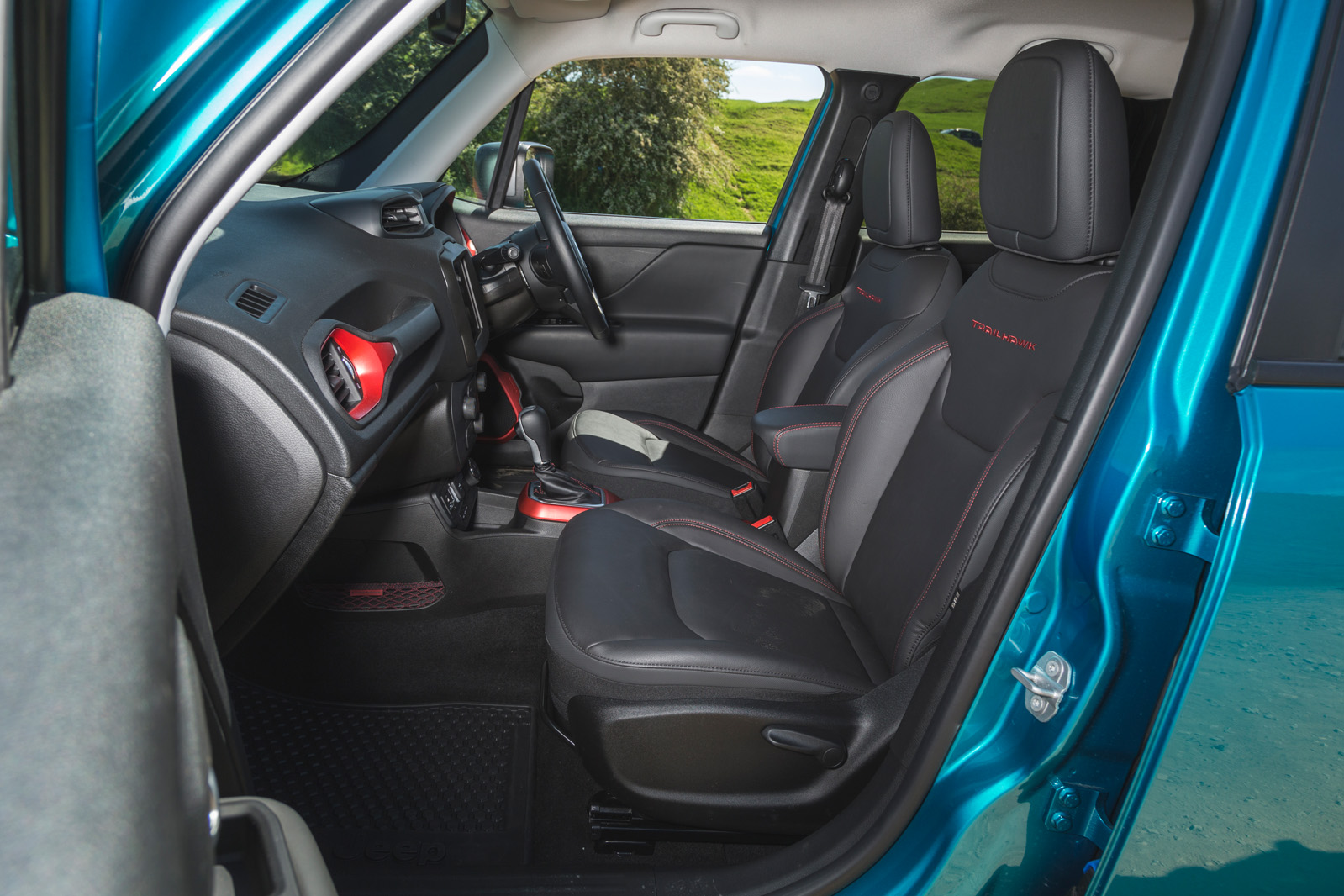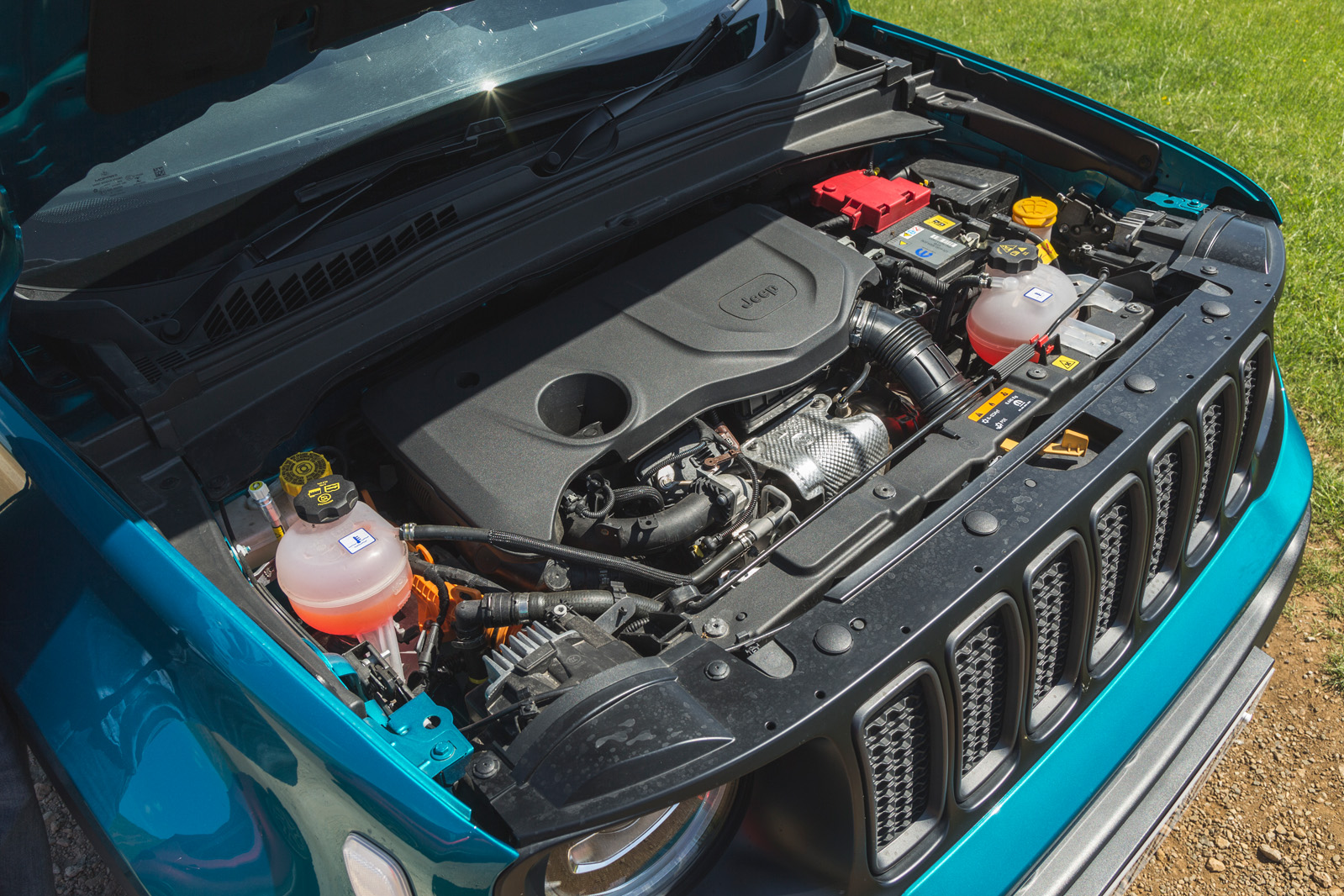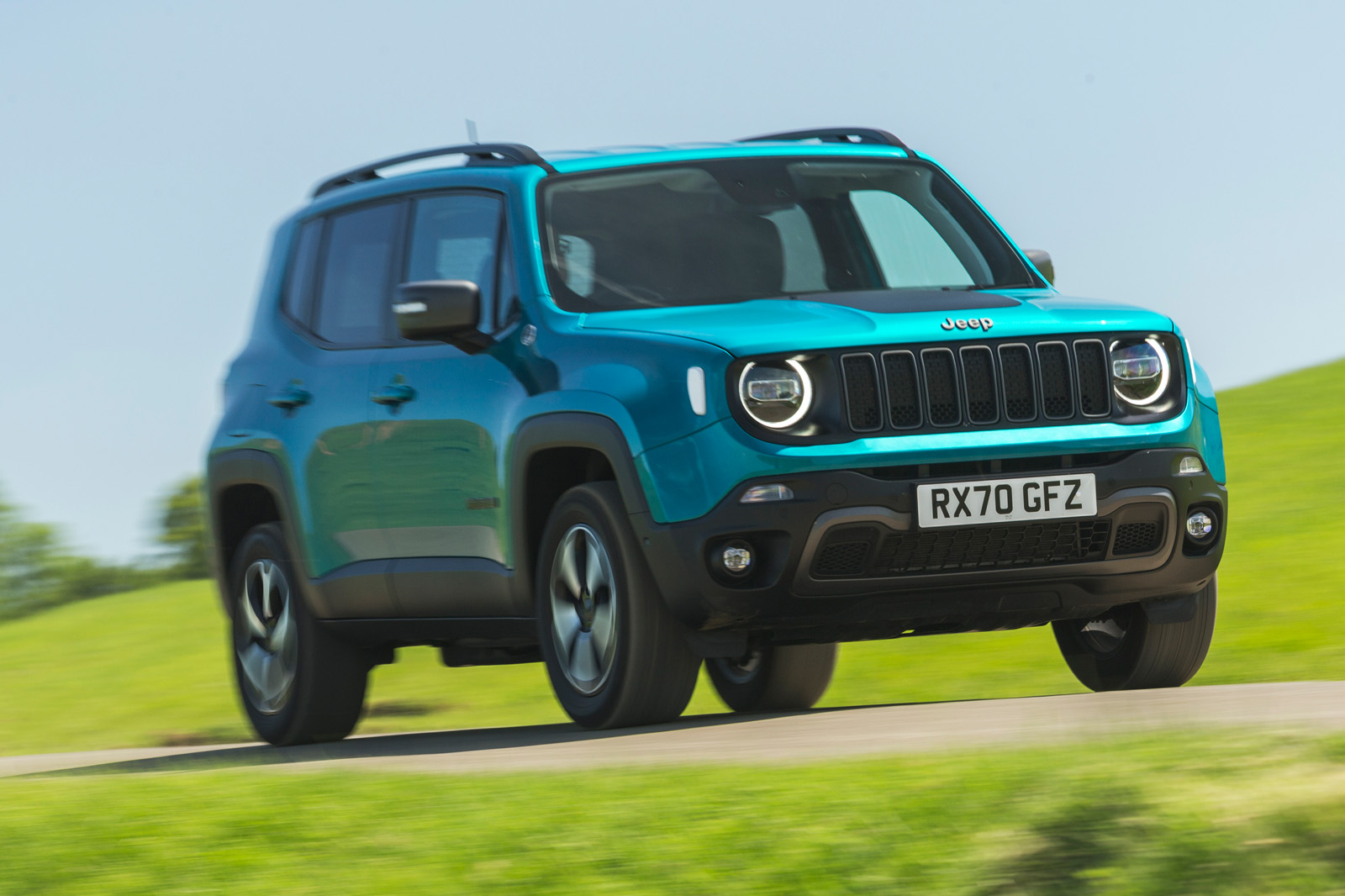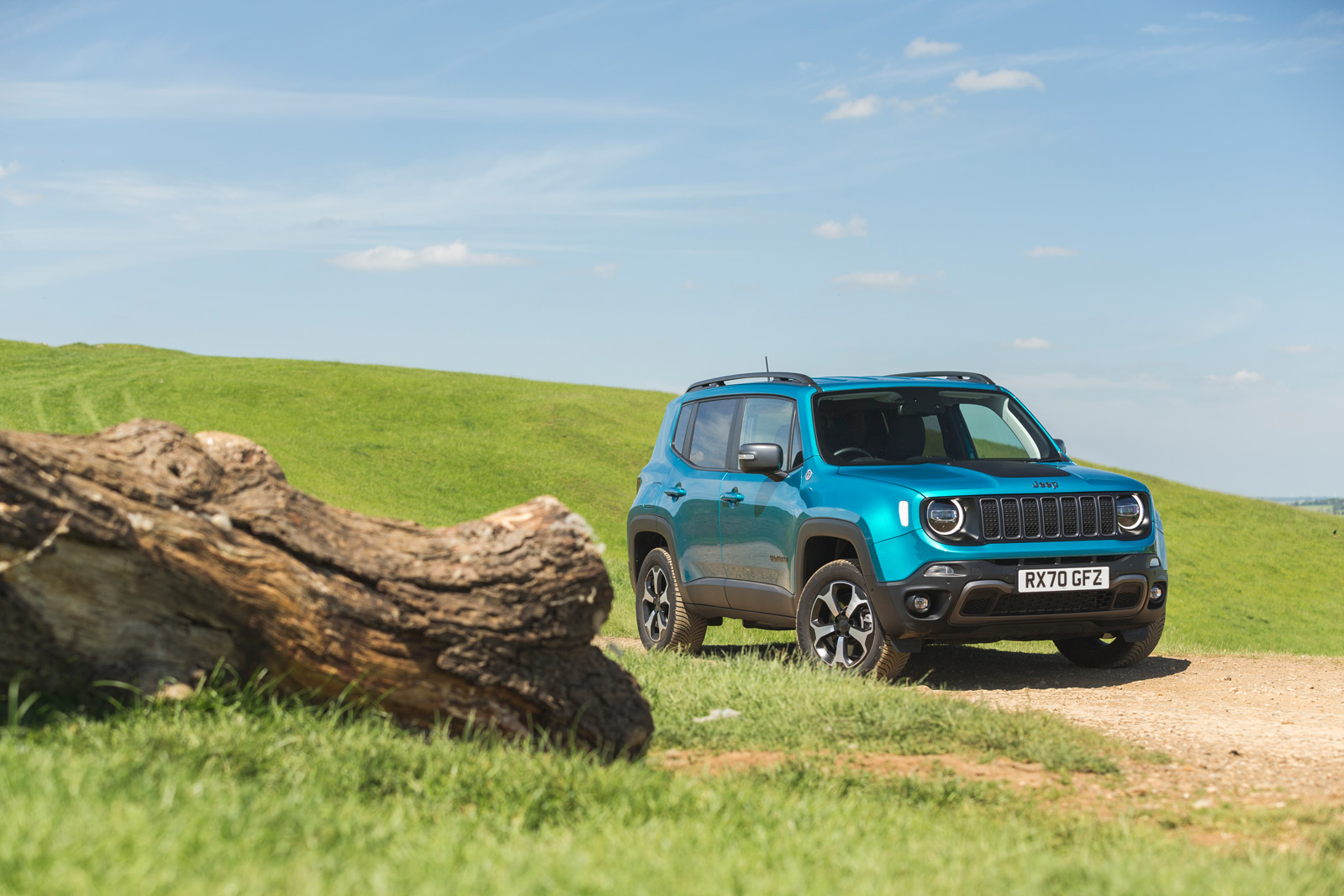Compact, boxy and pugnaciously cute as it may be, the Renegade just about counts as a proper four-seat, five-door family car. To squeeze three on its back seat would be a trial, but two younger adults fit just fine.
The relocation of the 12V battery to the side of the boot compartment, along with the packaging of the electric drive motor and power inverter under the floor, has affected boot capacity. The storage space is a little narrow and shallow by class standards and there’s only 330 litres under the load-bay cover, which is a good deal less than even a Volkswagen Golf hatchback offers until you start folding seats and loading to the roof. However, there is space for a full-sized spare wheel under the floor if you want one. If you don’t, the split-level boot floor makes the best of what storage volume there is.
The driving environment is quite distinctive, characterful and colourful in places, although some notable low points on perceived quality rather betray this Renegade’s status as ostensibly a pretty cheap crossover with an expensive powertrain. Luckily for Jeep, its cars have always had functional cabins finished quite sparsely and with plain, tough materials.
The Renegade’s certainly feel quite plain; not always so tough or hard-wearing, though. The shiny, wobbly mouldings used around the steering column are like those that other manufacturers only fit to prototypes. Elsewhere, flimsy, rough-feeling seat adjustment levers, dull-looking ‘leathers’, wobbly exterior mirrors and hollow-sounding doors might leave a slightly sour taste in your mouth.
The driving position is medium high, granting good visibility in most directions, on a broadly comfortable driver’s seat that lacks some adjustability. The secondary controls are chunkily proportioned. Having a good-sized scroll knob for the touchscreen infotainment system, for example, would be useful when driving in gloves or with dirty hands.
Jeep’s alterations to the instrument pack for the PHEV version of the Renegade didn’t seem to make quite so much sense to our testers. By removing the standard car’s analogue speedometer and replacing it with a fixed ‘power/ charging gauge’, it has taken away something useful and replaced it with something at least a bit superfluous.
Being told how hard the car’s powertrain is working or regenerating power at any one time seems a little needless when the position and action of your right foot can inform you just as well. That’s true particularly considering that the digital speedometer that has been added is generally given too little prominence on the wider instrument layout, although that does depend on the display mode you’ve chosen for the slightly antiquated-looking digital trip computer.
Jeep Renegade 4xe infotainment & sat-nav
All Renegade 4xe models come with an infotainment offering that includes a 7.4in central driver display and an 8.4in ‘UConnect’ touchscreen with a factory navigation system, an in-car wi-fi hotspot and wired smartphone mirroring for both Apple and Android handsets. (Wireless device charging isn’t available.)
It’s a slightly basic-looking but pretty comprehensive set-up and Jeep’s layout of shortcuts makes it usable enough. There are built-in software app screens that allow you to manage the car’s charging preferences and to keep track of what it’s doing in its various off-roading modes; and if you download the UConnect app to your smartphone, you can connect to the car remotely to check its condition and prepare it for departure.
The car’s factory navigation system can be a little fussy when you’re programming a destination; it didn’t accept voice commands every time for us; and the mapping it displays lacks a little bit of detail and graphical sophistication.


